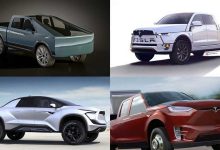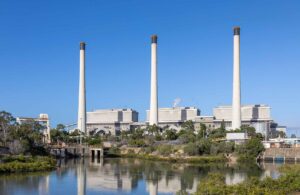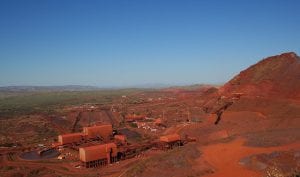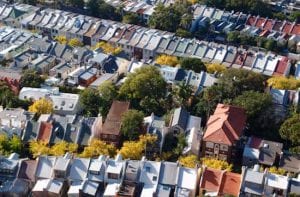Australia appears condemned to continue in the slow lane of the global transition to electric vehicles after a leaked copy of the federal government’s “future fuels” discussion paper revealed a “do nothing” strategy and few initiatives to accelerate the uptake of EVs in Australia.
The leaked discussion paper, obtained by RenewEconomy and its EV-focused sister site The Driven, contained little in the way of new funding or programs, apart from an observation that Australia desperately needs more charging infrastructure and basic information for consumers.
The one initiative that is unveiled is a commitment by Comcar, that operates the federal government’s car fleet, will conduct a two year trial of EVs to assess their potential future use.
The fact that Australia’s EV policy remains only a “discussion document” – despite the promises in the last two years of a detailed policy – has also left the industry and advocates disappointed, but hardly surprised given the Coalition’s disinterest in EVs, and its relentless misinformation during last year’s election campaign – led by prime minister Scott Morrison and energy minister Angus Taylor.
“It’s actually a do nothing strategy,” Behyad Jafari, the CEO of the Electric Vehicle Council, said. “It’s a real shame because we know what works. The government has announced another $2.7 billion in fossil fuel subsidies, but on EVs they have got no plan.”
Jafari says Australia, already trailing the world with less than 1 per cent penetration of EVs in new car sales (compared to Noway’s car 80 per cent), will be left further behind just as the global transition to electric vehicles is picking up pace.
“Transitioning to electric vehicles is unarguably in our national interest, yet this strategy does nothing to accelerate the process.
“If Australians were supported toward electric vehicles we could significantly reduce respiratory illness in our cities, shake off our fuel insecurity, cut our carbon emissions, and even firm up our grid with a giant collective battery. This strategy does not help us realise this exciting future.
“In the US, drivers are offered a $10,000 tax rebate for buying an electric vehicle, and American consumers get access to much cheaper electric vehicle options because of their long standing vehicle emission standards.”
Labor spokesman Mark Butler lamented the lack of any mention of a fuel efficiency standard, which has been an effective policy tool in Europe and parts of the US. The lack of a fuel efficiency standard means that Australian consumes burn dirty fuel, and have inefficient cars which cost up to $600 a year in extra fuel costs, according to the government’s own figures.
The federal government has shown little interest in EVs, last year attacking the Labor goal to achieve a 50 per cent share of new vehicle sales by 2030, saying that EVs could not tow boats, couldn’t be taken camping, and were too slow to charge.
Since then many countries have announced outright bans on the sale of petrol and diesel cars, with the UK ban to come into force from 2030, and Norway’s from 2025.
The Australian government discussion paper suggests that Australia will reach around 26 per cent penetration of EVs in new car sales by 2030, but offers nothing to accelerate that transition.
It confirms the $72 million “future fuels” funding announced in the federal budget, which will include support for infrastructure for EVs, hydrogen fuel cell vehicles and cars powered by biofuels, and assorted initiatives – such as vehicle-to-grid trials and network rollouts – which are supported by ARENA.
But there is no mention of any targeted uptake of EVs, nor any incentives to encourage the purchase of EVs. It makes mention of a two-year trial for the Commonwealth fleet – which earlier this year snubbed EVs – and the desire to encourage commercial fleets to embrace EVs in order to create a strong second hand electric vehicle market.
“The Future Fuels Fund could businsss make elecrrical upgrades and install battery chargers at a depot for battery electric delivery trucks, where installation costs might be a barrier to battery electric vehicle uptake.

The priorities listed in the discussion paper include recharging infrastructure for both EV and hydrogen cars, a focus on commercial fleets, improving information for consumers, integrating EVs into the electricity grid and supporting local innovation and manufacturing.
The “actionable” items include the future fuels fund, a “green vehicle guide”, more analysis on EV integtation into the grid, and more studies into local opportunities for future fuels.
The discussion paper insists that conventional petrol and diesel vehicles would continue to dominate purchases over the short to medium term, and the government priority was to ensure that transport fuel supplies were guaranteed – hence the recently announced support to refineries and long term fuel reserves.
Richie Merzian, from The Australia Institute, said Australia been waiting two years for an EV strategy, and was now not going to get even that.
“What it appears we will get is a watered down discussion paper, and from what I hear it will be wafer thin, and include very little in the way of direct incentives,” Merzian said.
“Which is so dispappinting bcause we know that these work. The government is so quick to come in to help the fossil fuel industry, and so slow when it comes to supporting clean energy.
“This why the PM was not invited to last weekend’s climate summit, because Australia has no ambition.”








